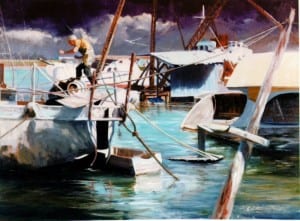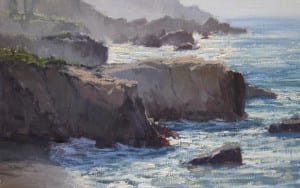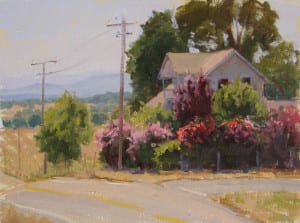
Is art just a pleasant hobby? Or, is the goal is to become the best artists we can be? If so, how?
Think of the game of golf. The high handicapper plays round after round… with little improvement; the touring pro practices in order to elevate his game. Tiger Woods is renowned for playing 18 holes in a tournament and then going straight to the practice range to fine tune.
The best artists set aside time for self-improvement. Practice doesn’t make perfect… “perfect practice makes perfect.” Or as my friend Dan Gerhartz says, “Attack your weakness.” Isolate the problem area and work on it. In other words, set up a self-study program. Here are some things you can do:
Drawing (proportion or shape)
- Copy heads from the makeup ads in Seventeen or Alluremagazines. HINT:
- measure
the proportions on the reference and use the same relative proportions on your drawing.
- Get the Bargue / Gerome book, Drawing Course (Dover Press carries it). Copy the drawings. These are the plates used to prepare students for the French Academy des Beaux Artes.
- Join a sketch group in your area.

Values
- Make some full-value drawings of a plaster cast using one light source. (Squint to simplify the values.)
- Paint a monochromatic head study (use terra rosa and wipe out the lights with a rag…you may need to use some mineral spirits on a q-tip to get the highlights)
- De-saturate an image of a Sargent or Zorn painting and copy it in raw umber and white in five values.
Color
- Make color charts. Richard Schmid describes how to do them in his book, Alla Prima (NOTE: You can’t just look at them; you have to actually make them yourself to get any benefit.)
- Google “Henry Hensche”. Find a description of his training exercises and do them. The more you do these exercise, the more sensitive your color perception will become.

Edge control
- Squint, squint squint!!! Identify the sharpest edge on your subject (while squinting) and compare all other edges to it. If you can’t see a clear edge when you squint, don’t put one in your painting.
- Copy a head by Fechin.
Design / Composition
- Find a copy of Creative Illustration by Andrew Loomis and study the sections on composition (Google him; there’s a site where you can download the book.)
- Buy Edgar Payne’s Composition of Outdoor Painting. Copy the “design stems”
- I have released a DVD called Composition Secrets of the Masters that includes a number of exercises. It is available at www.lilipubs.com

One final thought: paint as much as you can from life (even though many of the above exercises rely on photos.) The camera lies! In a photo, values, edges, and color temperature are always wrong and half the time the proportions are off as well. In other words at least 3 of the 4 elements of representational painting are wrong in a photo reference. Read what your favorite artists have to say on the subject; the pros work mostly from life, amateurs often work mostly from photos.
Good luck and happy painting!



